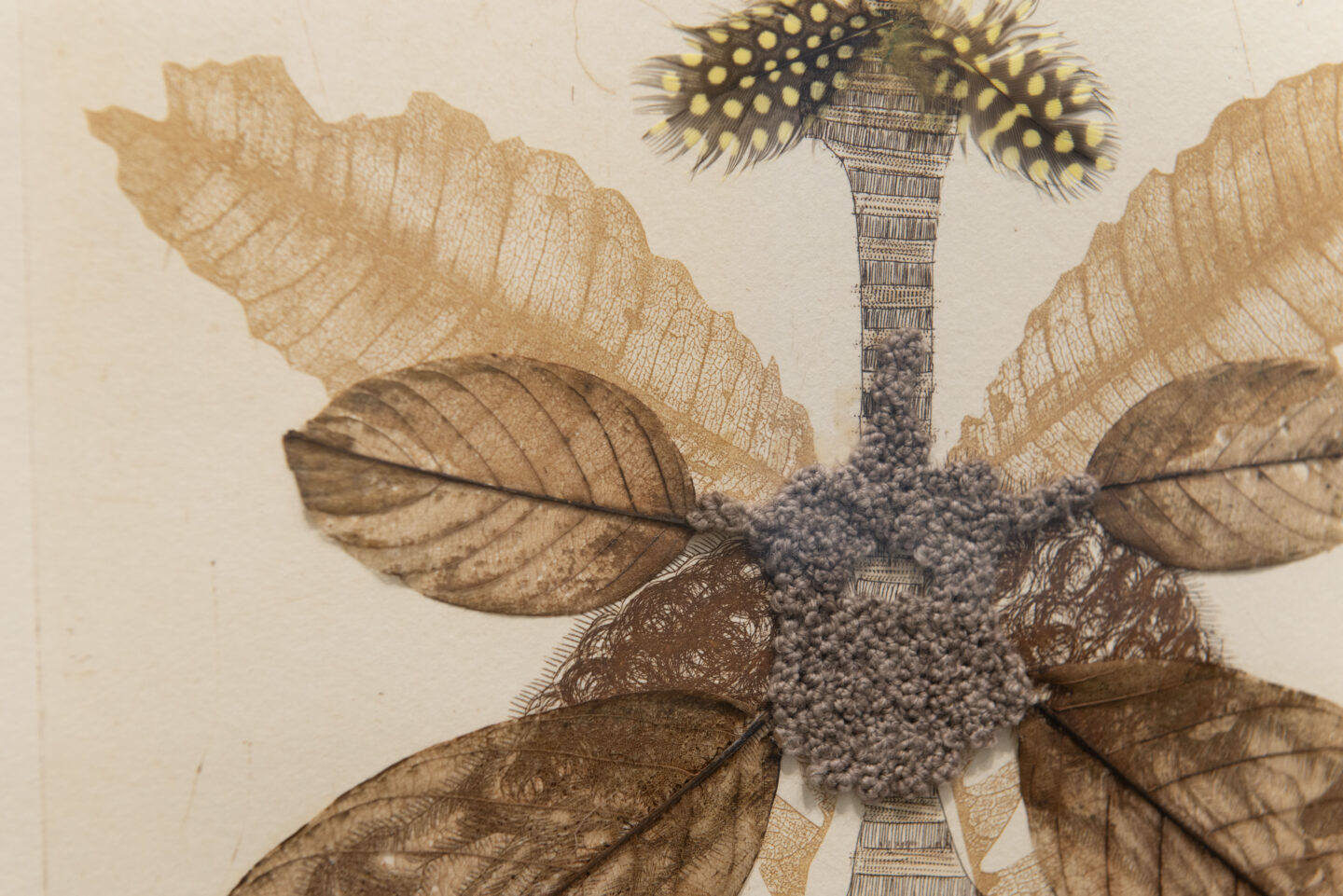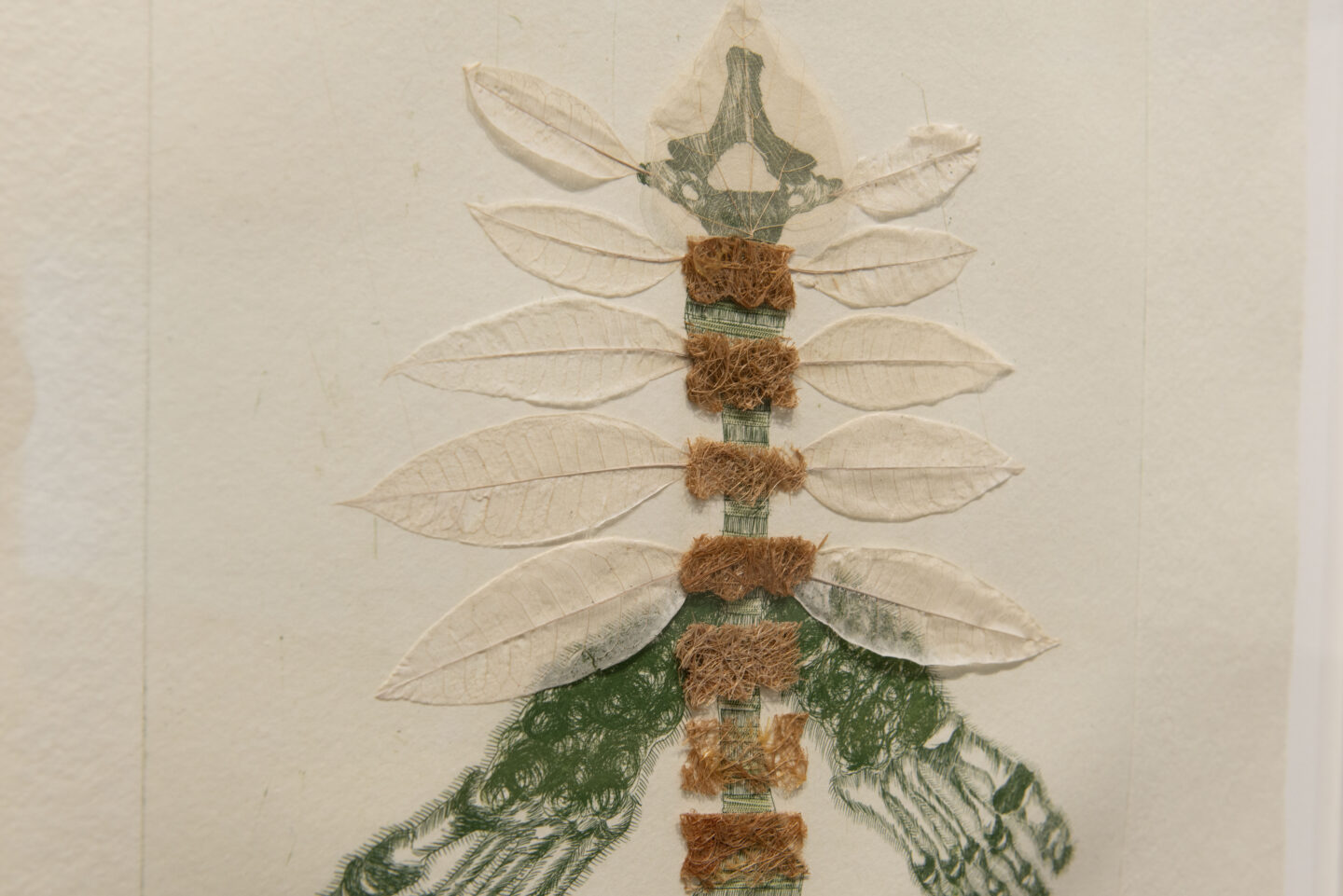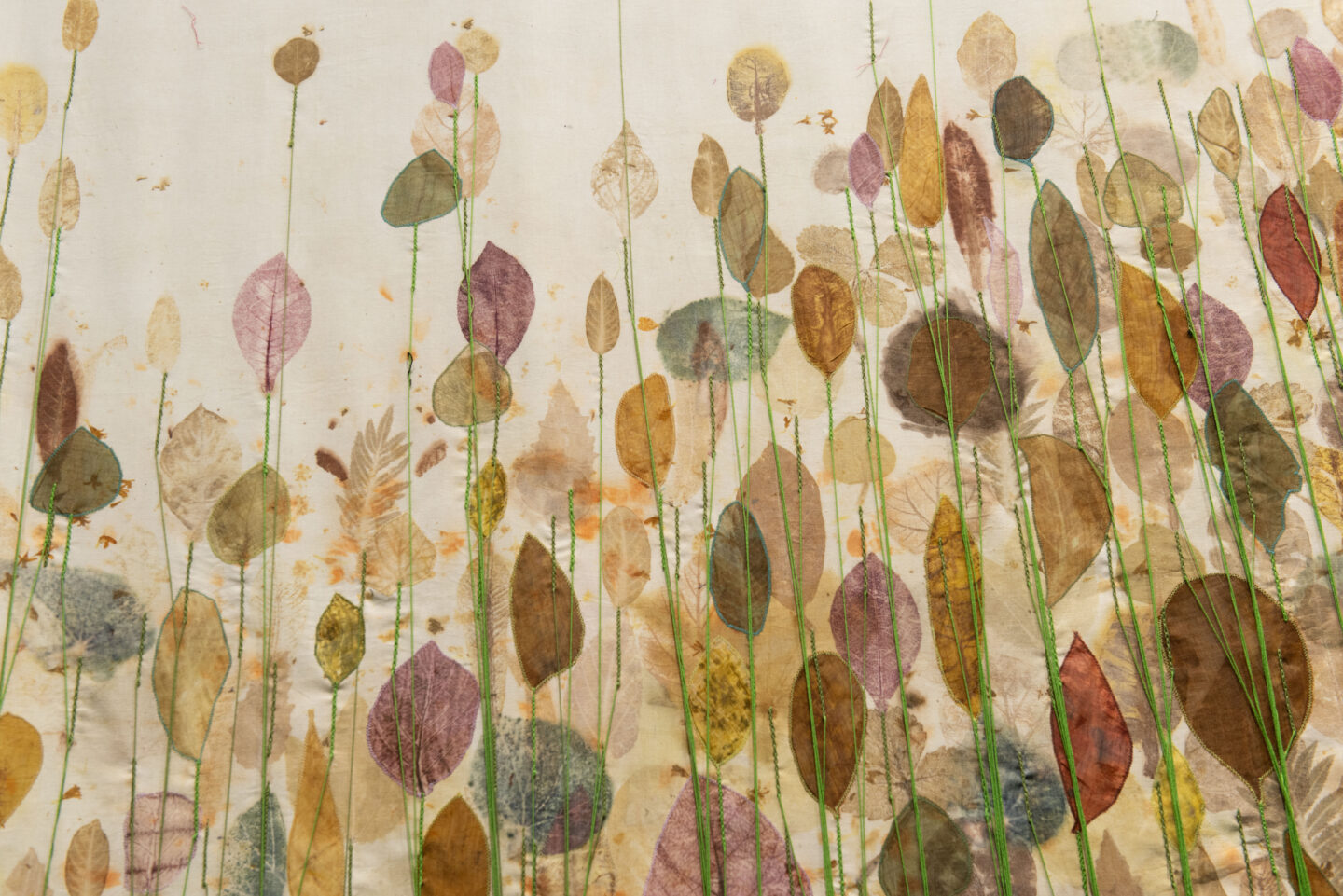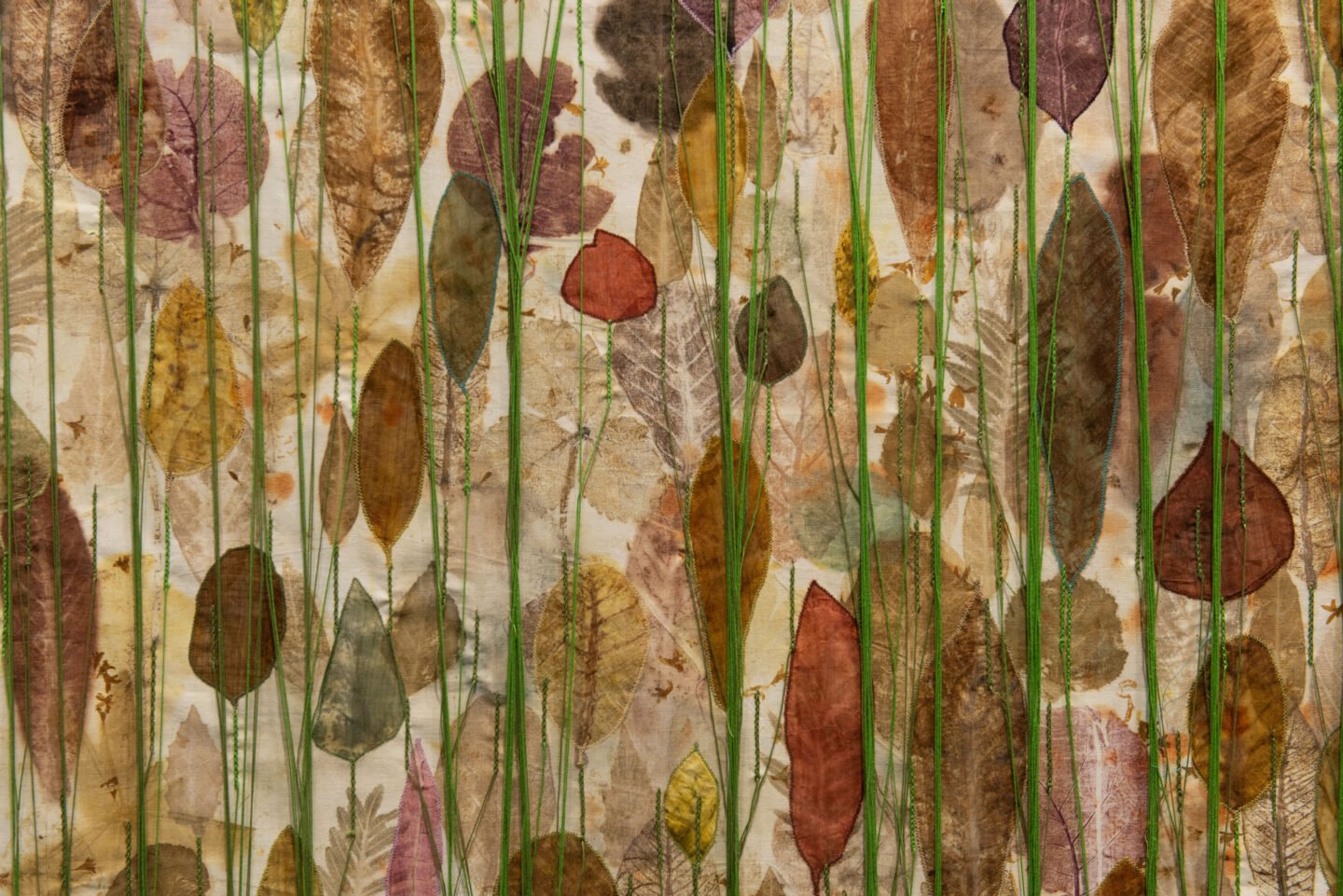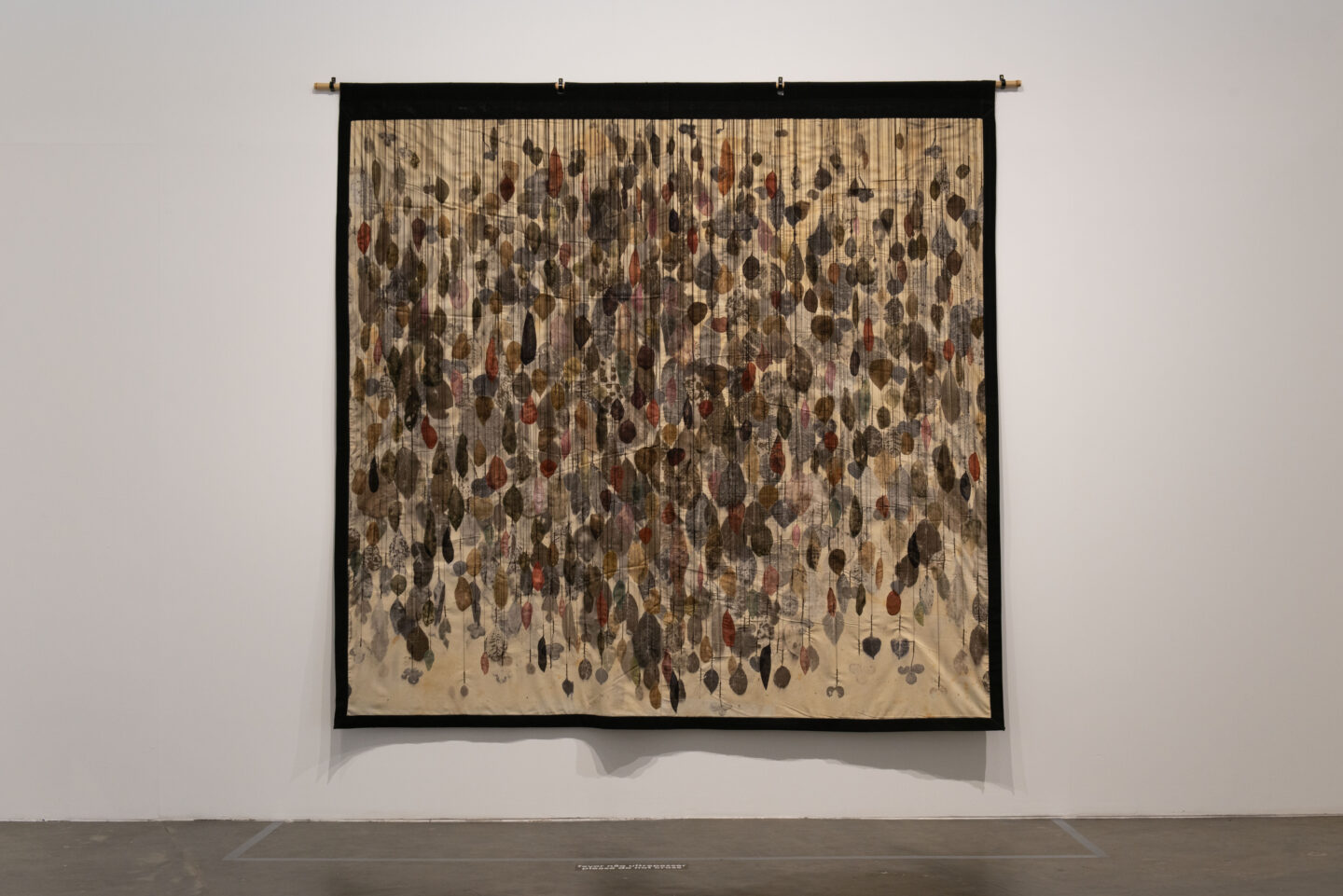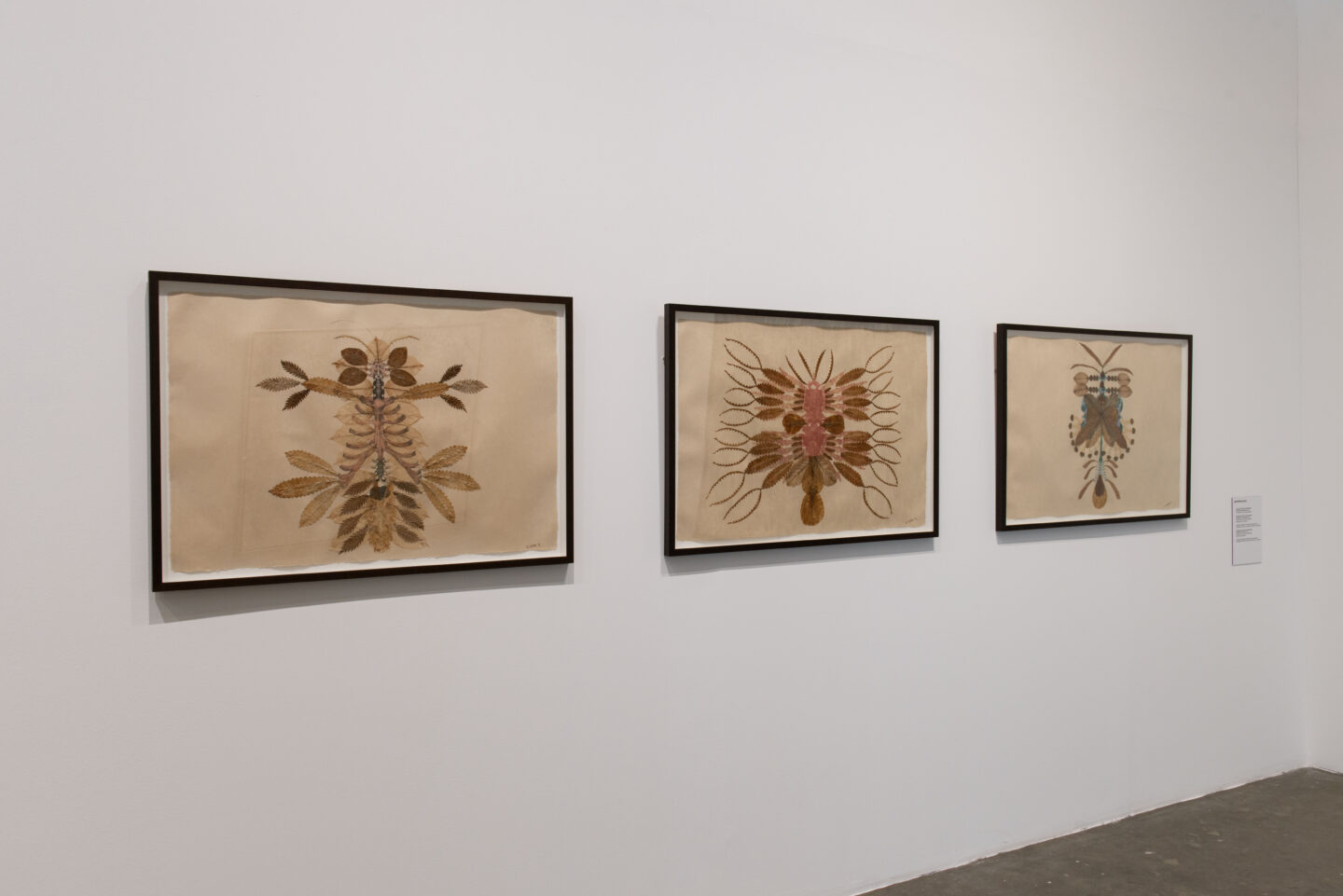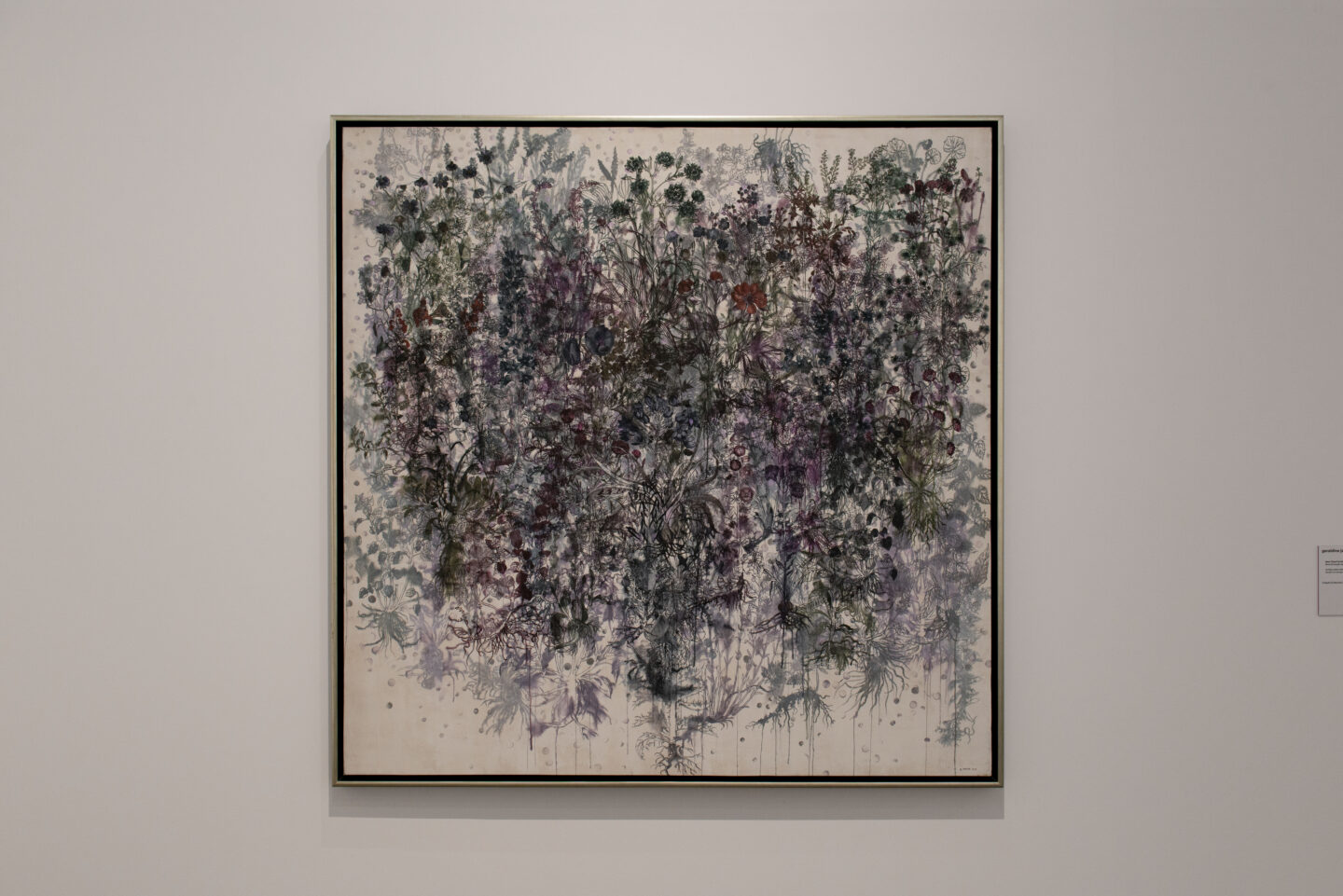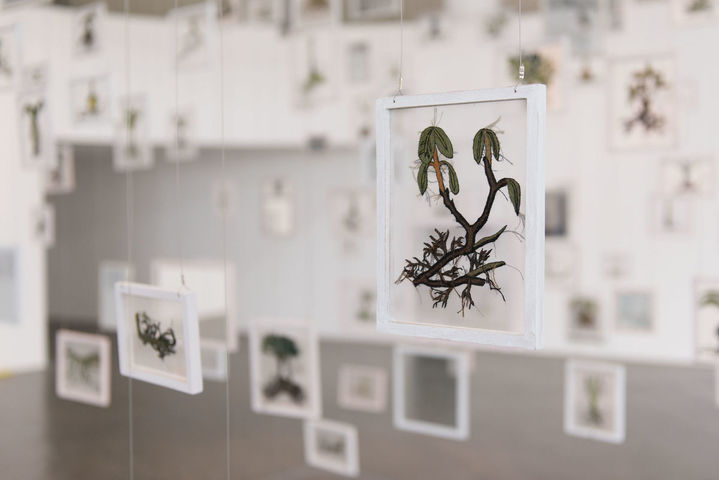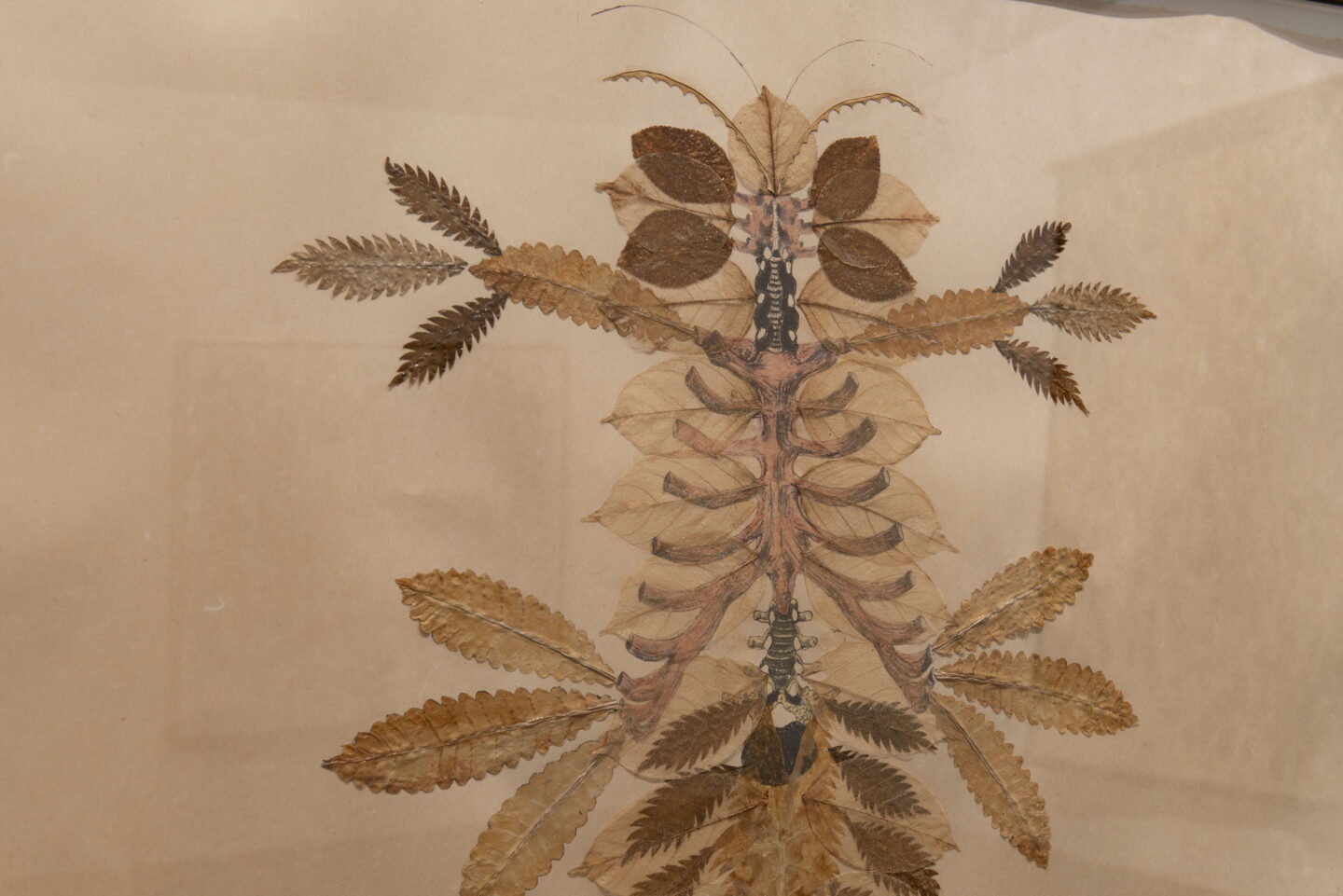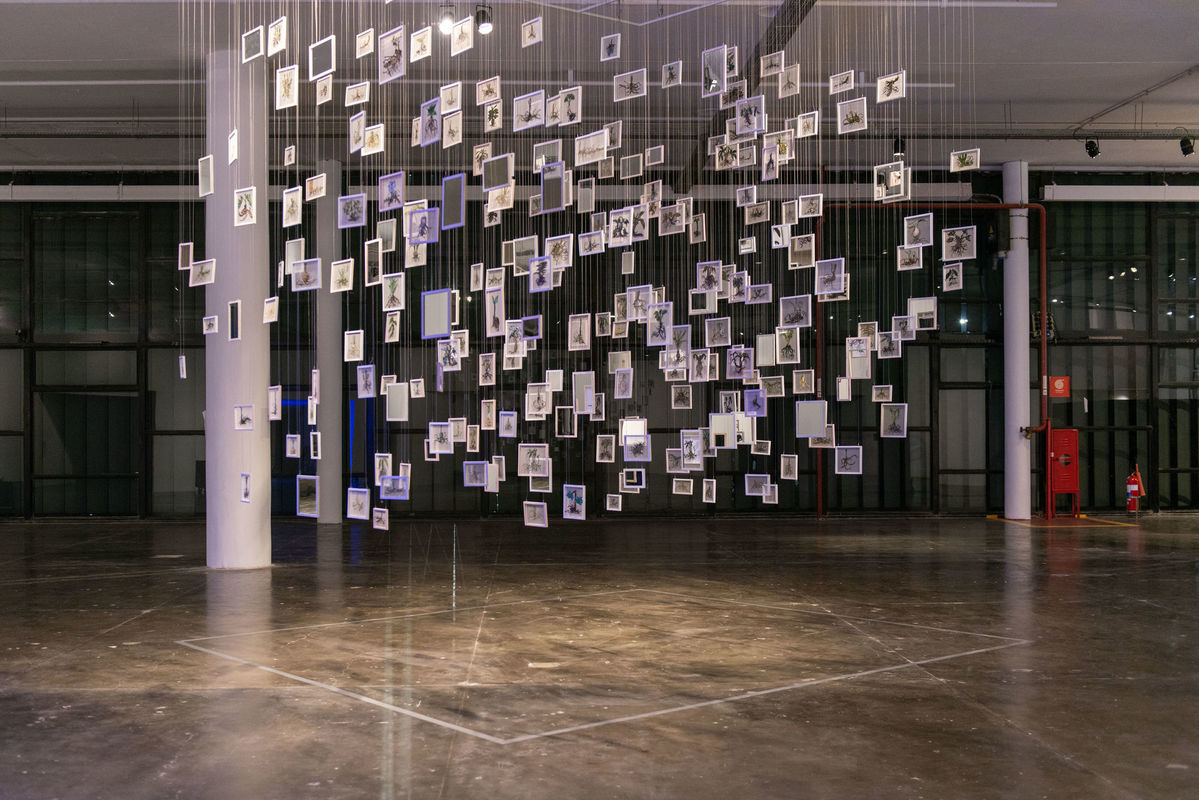
Geraldine Javier
Geraldine Javier lives and works in the crucible of a climate crisis that makes guilt and extinction go hand in hand. In her work, the often pessimistic and nostalgic reactions to this necro-speculative economy are openly confronted with installations and paintings that present a self-mutating world of plants no longer recognizable. In Oblivious to Oblivion (2017), a large- scale installation which forms a massive suspended cloud, the threaded pictures of unlikely vegetables hang along mirrors. The fleeting reflections of spectators in the small mirrors further insist on an undifferentiated humanity, challenging its deeply rooted antagonism with the natural world.
The painterly effects resulting in free floating compositions recall cosmic arrangements that perfectly fit in the all-over composition typical of modern painting. They invite an immersive experience that is consistent with the avoidance of a straight political engagement. As the titles of her more recent works state, she positions herself in the midst of uncertainty. Bouncing back between hope and despair her work still relies on a reparative horizon. Even though she has defined herself as an artist who does not tackle political things, the overall impression is that of an affirmative practice that avoids mourning and blaming.
Vis a vis processes of degradation, pollution, and extinction, The Creatures in Search of Their Species (2012) assert themselves as an array of transformative beings. Rather than presenting a dead, fixed and lost world, as it is often the case of catastrophic and retrospective thinking, they bring forth a grammar for a regenerative future. Against the fate of destruction she opposes a politics of care that no longer resembles past forms of politics. Whereas her paintings come across as an individual practice, her installations involve a communal activity that reveals uneven sensibilities in the treatment of materials, an expression of interdependent life-forms and intergenerational cooperation.
carles guerra
- Detalhe da obra 9 Creatures in Search of their Species (Pelvissomniumreduviidae A) [9 criaturas à procura de suas espécies (Pelvissomniumreduviidae A)], de Geraldine Javier durante a 35ª Bienal de São Paulo – coreografias do impossível © Levi Fanan / Fundação Bienal de São Paulo
- Vista da obra Oblivious to Oblivion [Alheios ao esquecimento], de Geraldine Javier durante a 35ª Bienal de São Paulo – coreografias do impossível © Levi Fanan / Fundação Bienal de São Paulo
- Detalhe da obra 9 Creatures in Search of their Species (Pelvissomniumreduviidae C) [9 criaturas à procura de suas espécies (Pelvissomniumreduviidae C)], de Geraldine Javier durante a 35ª Bienal de São Paulo – coreografias do impossível © Levi Fanan / Fundação Bienal de São Paulo
- Detalhe da obra Insist on Hope, Desist from Despair [Insista na esperança, desista do desespero], de Geraldine Javier durante a 35ª Bienal de São Paulo – coreografias do impossível © Levi Fanan / Fundação Bienal de São Paulo
- Detalhe da obra Insist on Hope, Desist from Despair [Insista na esperança, desista do desespero], de Geraldine Javier durante a 35ª Bienal de São Paulo – coreografias do impossível © Levi Fanan / Fundação Bienal de São Paulo
- Vista da obra Insist on Hope, Desist from Despair [Insista na esperança, desista do desespero], de Geraldine Javier durante a 35ª Bienal de São Paulo – coreografias do impossível © Levi Fanan / Fundação Bienal de São Paulo
- Vista da obra Insist on Hope, Desist from Despair [Insista na esperança, desista do desespero], de Geraldine Javier durante a 35ª Bienal de São Paulo – coreografias do impossível © Levi Fanan / Fundação Bienal de São Paulo
- Vista da obra 9 Creatures in Search of their Species [9 criaturas à procura de suas espécies] de Geraldine Javier durante a 35ª Bienal de São Paulo – coreografias do impossível © Levi Fanan / Fundação Bienal de São Paulo
- Vista de obra de Geraldine Javier durante a 35ª Bienal de São Paulo – coreografias do impossível © Levi Fanan / Fundação Bienal de São Paulo
- Detalhe da obra Oblivious to Oblivion [Alheios ao esquecimento] de Geraldine Javier durante a 35ª Bienal de São Paulo – coreografias do impossível © Levi Fanan / Fundação Bienal de São Paulo
- Detalhe da obra 9 Creatures in Search of their Species (Costaesomniumblattaria) [9 criaturas à procura de suas espécies (Costaesomniumblattaria)], de Geraldine Javier durante a 35ª Bienal de São Paulo – coreografias do impossível © Levi Fanan / Fundação Bienal de São Paulo
Geraldine Javier (Makati, Philippines, 1970. Lives south of Manila, Philippines) is a visual artist that is best known for her work which blends paintings and a variety of media. By 2022, she had had 33 solo exhibitions in the Philippines, Southeast Asia, South Korea, China and Germany. Her exhibitions would often be a mixture of paintings and installations often using fabrics and organic objects. A committed gardener, her work increasingly dealt with our relationship with nature and the installations are community-orientated.

 Português
Português